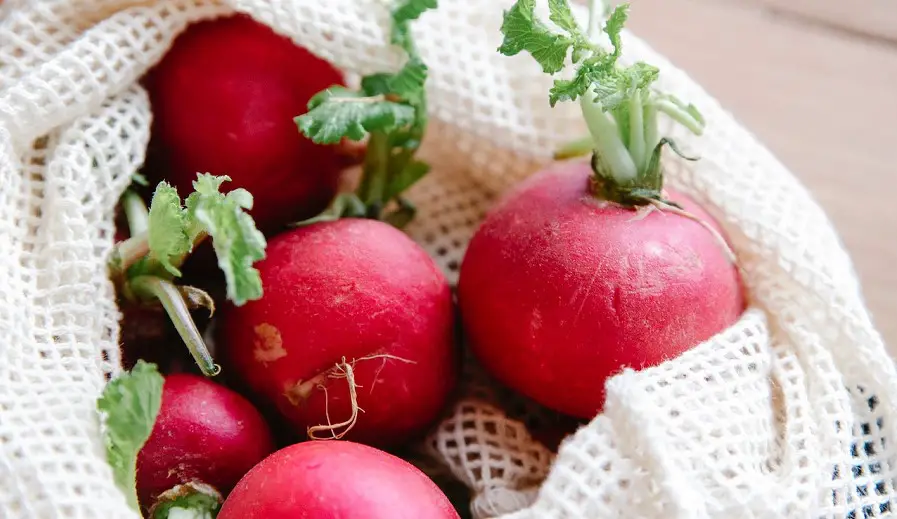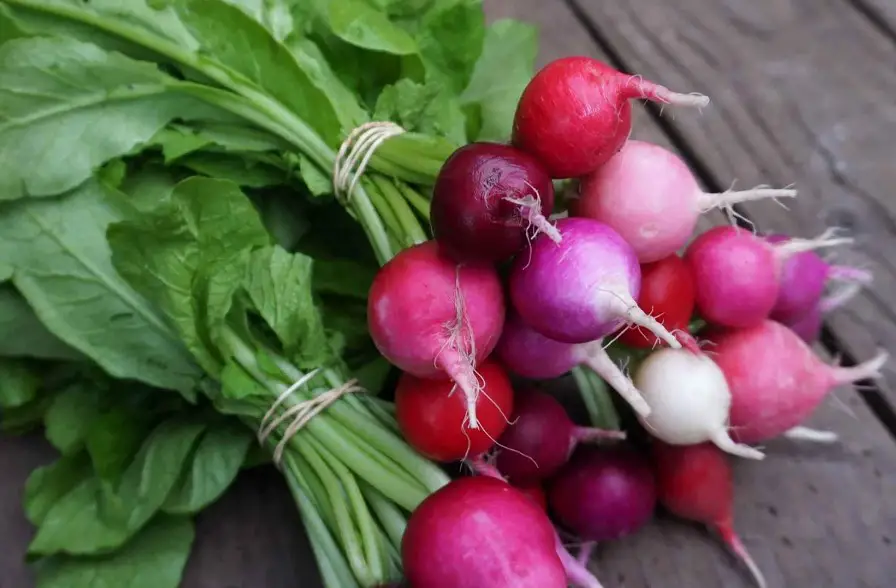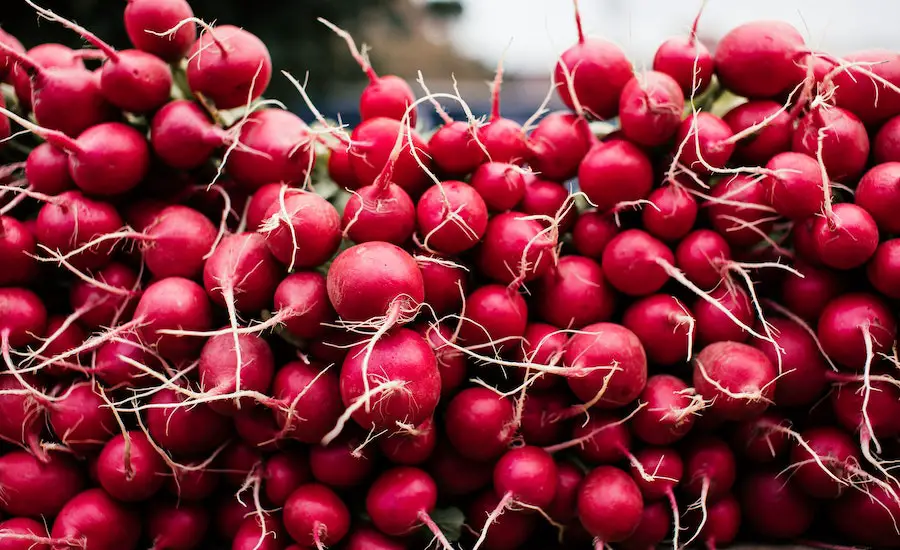You’ve just picked up a bunch of juicy radish greens from the store, but you’re not sure how long they will last. Or worse, you’ve just opened a bag of radishes that have been in your refrigerator for weeks, and now you’re wondering if they’re still any good.
How to properly store radishes? May I freeze radishes? Do radishes go bad? Can radishes be eaten raw? In this article, we’ll be discussing whether radishes go bad, how long they last, and how to tell if your radishes have gone bad.
We’ll also be giving you tips on storing and using radishes so that they stay fresh longer. By the end of this article, you’ll know all there is to know about these crunchy little root vegetables. So grab a snack and let’s get started!

Contents
- 1 Types of radishes
- 2 How to tell if radishes are bad?
- 3 How long do radishes last?
- 4 Basics of radish selection
- 5 Preparing and freezing radishes
- 6 How to use the radish leaves as greens?
- 7 Tips on buying fresh radishes
- 8 Different methods of storing radishes
- 9 The dos and don’ts for pickled radishes
- 10 Cooking with radishes
- 11 Are soft or discolored radishes still good?
- 12 Conclusion
- 13 FAQs
Types of radishes
Do you love eating radishes? Did you know there are lots of different kinds of radishes? Depending on where in the world you are, you’ll find various types of radishes like black radishes, red radishes, and others. Commonly, however, they all look very similar—like mini-red cabbages.
Some common types of fresh radishes often found in supermarkets include:
White Icicle or White Tip
These have cylindrical shapes and white tips. They have a mild to sweet flavor.
Daikon Radish
These are the longest type of them all and range from 3-4 inches in length. They have a milder flavor than other varieties.
French Breakfast Radish
These have an oblong shape and come in red and white colors; dark red at the top and white at the bottom. They tend to be quite spicy compared to other varieties.
Easter Egg Radish
These have colorful skin ranging from pink, white, purple, yellow, and green—hence their name! They can be spicy but generally don’t pack as much heat as French Breakfast radishes.

How to tell if radishes are bad?
So, you’ve got some radishes in your fridge—but now you’re not sure whether they’ve gone bad or not.
Don’t worry, it’s easy to figure out whether your fridge radishes are still good or not.
The most obvious sign is visual—if the outer covering of the entire radish looks dry and shriveled, that means it’s starting to go bad. You might also see a white powder coating the skin of your radish as an indication of spoilage. It’s best to discard radishes with these signs, as they won’t be edible.
Do a smell test and feel the texture of the radishes before eating them to determine if they are safe to consume or need to be thrown away. If the radishes smell off, they may be expired and should be tossed out.
If they are too soft or mushy, that means they have gone bad, and soft radishes should be thrown away immediately. If you think they are still okay to eat, another sniff test is necessary before biting into them.
How long do radishes last?
Fresh radish shelf life
So, how long do radishes last? Believe it or not, fresh radishes, especially unwashed radishes, have a pretty long shelf life. If they’re properly stored, they will last for up to a month in the fridge. A good rule of thumb is that once you prepare them, the radishes should be eaten within the same day.
To keep your radishes fresh for as long as possible, follow these steps:
- Place them in an airtight container or a sealed plastic bag and store them in the fridge.
- For extra protection and preservation, you can wrap them in a damp paper towel or cloth before putting them away.
- They can also be frozen! Simply place your washed and chopped radishes into a freezer bag and store them for up to six months in your freezer.
It is easy to tell when radishes are bad. Fresh radishes should look like firm little balls with no bruises or blemishes on the surface. If you notice that your radish has started to become soft, mushy, or has developed brown spots on its surface, it’s time to discard it!
Basics of radish selection
When selecting radishes, there are a few basic things to keep in mind. Look for plump, smooth-skinned radishes with bright colors. Avoid any that have soft spots or signs of mold. Also avoid radishes with withered, yellowing leaves or any with visible decay.
To check for freshness, give the radish a light squeeze—if it feels firm and crisp, it’s good to go. If radishes feel soft or soggy, it’s time to move on.
You should also smell the radish—if it has a very subtle aroma and does not have an overly pungent odor, the radish is fresh and good to eat. If it smells rancid or sour, discard the product right away.
Radishes can last up to two weeks if stored properly in a refrigerator, but use your senses to make sure they are still good before consuming.
Preparing and freezing radishes
How to store radishes to extend their shelf life? If you’re lucky enough to have more radishes than you can eat before they go bad, it’s time to freeze radishes! Here are a few tips on how to do that:
- Start by washing radishes with cold water thoroughly. Make sure to get rid of any dirt or debris.
- Slice them into rounds or cut them into cubes.
- Blanch the slices or cubes for about two minutes in boiling water, and then transfer radishes immediately to ice water for another two minutes. This process helps preserve their color and texture when freezing.
- Place the blanched radishes in shallow containers and put them in the freezer. It’s best if you use containers with tight-fitting lids so that your frozen radishes don’t absorb other flavors in the freezer.
- When ready to use your frozen radishes, let them thaw slowly in the fridge before cooking with them!
This method for freezing radishes will help keep your vegetables fresh for much longer than the recommended five days if kept in the fridge –up to eight months!
How to use the radish leaves as greens?
Radish leaves are edible and have a pleasant flavor, making them a mix of mustard greens and arugula. When using them, it is important to discard any wilted or discolored bits.
Start by rinsing the leaves and picking over them to discard any stems.
Once you have your clean leaves, you can use them in salads, soups, or as a versatile side dish—the same way you would use other leafy greens like kale or spinach. Here are some ideas of how you can cook with radish leaves:
- Sautéed in butter or oil with garlic and a sprinkle of sea salt
- Chopped up into an omelet or Quiché
- Blended into smoothies
- Added to spring rolls or summer rolls
- Spread on toast with olive oil and garlic
- Roasted in the oven with olive oil, nutritional yeast, garlic powder, and black pepper
- Sautéed with bacon and onions

Tips on buying fresh radishes
How do you tell if radishes have gone bad? When buying this crisp vegetable, it’s important to look for signs of freshness. Here are a few tips:
- Take a close look at the whole radishes. They should be firm and have vibrant coloring, with no soft spots, discoloration, or withering leaves.
- Avoid any that have split skin or other bruises.
- Don’t buy bunches with giant turnip-like radishes. These tend not to be as fresh and sweet as their smaller counterparts.
- Look for colorful radish varieties like yellow, purple, and pink ones – they will be more flavorful and tender!
- Radishes will usually retain their freshness for a few weeks when stored correctly in the refrigerator. Frozen radishes will last even longer!
By keeping these tips in mind while shopping for radishes, you can ensure that you are getting the freshest produce every time!
Different methods of storing radishes
Storing radishes correctly is essential to making sure they remain fresh and delicious. There are a few different methods of storing them, and it’s important to pick the right one based on how quickly you intend to use them.
Refrigerator storage
The best way to store radishes is in the refrigerator. To do this, wrap them in a damp paper towel or cloth and store them in an airtight container or plastic bag for up to 2 weeks.
This is also the best way for preserving radish greens if you’ve bought them with their leaves attached, as the refrigerator will help retain some of their crunch and flavor.
Room temperature storage
If you want your radishes to last the longest, store them at room temperature away from direct sunlight and heat sources.
This will keep them from going bad quickly, though they won’t be as crisp as if they had been stored in a colder environment.
They will last this way for up to two months.
Freezing radishes
If you want your radishes to stay fresh even longer, you can freeze them after boiling or blanching first.
Boil for 8-10 minutes, then place in cold water before transferring to airtight containers or freezer bags. They will last up to six months this way!
The dos and don’ts for pickled radishes
Pickled radishes can be a great addition to a dish, but there are some dos and don’ts when it comes to pickling them.
To use fresh radishes, use quality white wine vinegar to marinate them, and marinate them for at least an hour before serving.
Don’t overdo it with the spices, and don’t leave the radishes in too long. Finally, don’t use too much salt.
Cooking with radishes
Radishes are a great addition to salads, roasts, stews, or soups, as they are versatile and can be used in many dishes.
Roasting is a great way to add radishes to a side dish, while pickling preserves them and adds crunchiness to salads.
Diced radishes add flavor and texture to soups, and can be combined with other savory ingredients like garlic and onions.
Are soft or discolored radishes still good?
If you find your radishes are soft or discolored, they may not be safe to eat.
Soft radishes may seem to be OK when you slice into them, but usually, by the time they’re soft, they’ve gone bad and are unsafe to eat.
Discolored radishes might have mold on them, which could also make them unsafe to eat.
To tell if a radish has gone bad, there are a few things to look for:
Softness
If a radish is no longer crunchy and firm, it has gone off.
Discoloration
If the color of the flesh becomes dull or spots of gray-white appear on the skin, the radish has gone off.
Mold
If you spot any signs of mold on your radish, then it’s time to throw it out.
If your radishes have any of these signs, discard them right away – don’t risk exposing yourself to potential food poisoning by eating bad radishes!

Conclusion
So, do radishes go bad, and how to tell if radishes are bad? The key to knowing if radishes have gone bad is to look at the root thoroughly and use your senses. If the root looks wilted, feels soft, or has an off-putting smell, toss it in the trash.
To ensure radishes stay fresh, separate them from their greens and store them in a cool, dry place with plenty of air circulation. Wrap them in a wet paper towel or store them in the refrigerator.
With these tips, you should have no problem telling if radishes are bad and can enjoy their nutritious, crunchy, and flavorful deliciousness.
FAQs
How do you know if a radish went bad?
If the radish tops are yellow, limp, or slimy, the radishes are old or have not been properly refrigerated. Remove the radish greens before storage.
How long do radishes last in fridge?
If you intend to consume the radishes within two to four days, storing them on the kitchen counter or in the pantry is a practical option. Fridge radishes remain fresh for one to two weeks. Consider freezing your radishes for up to six months for long-term storage.
What to do with radishes that have gone soft?
If your radishes are a bit soft, you can revive them by placing them in a bowl of ice water for approximately one hour before using them. This will help to add moisture back into the radishes, giving them the crispness you desire in a great radish.


